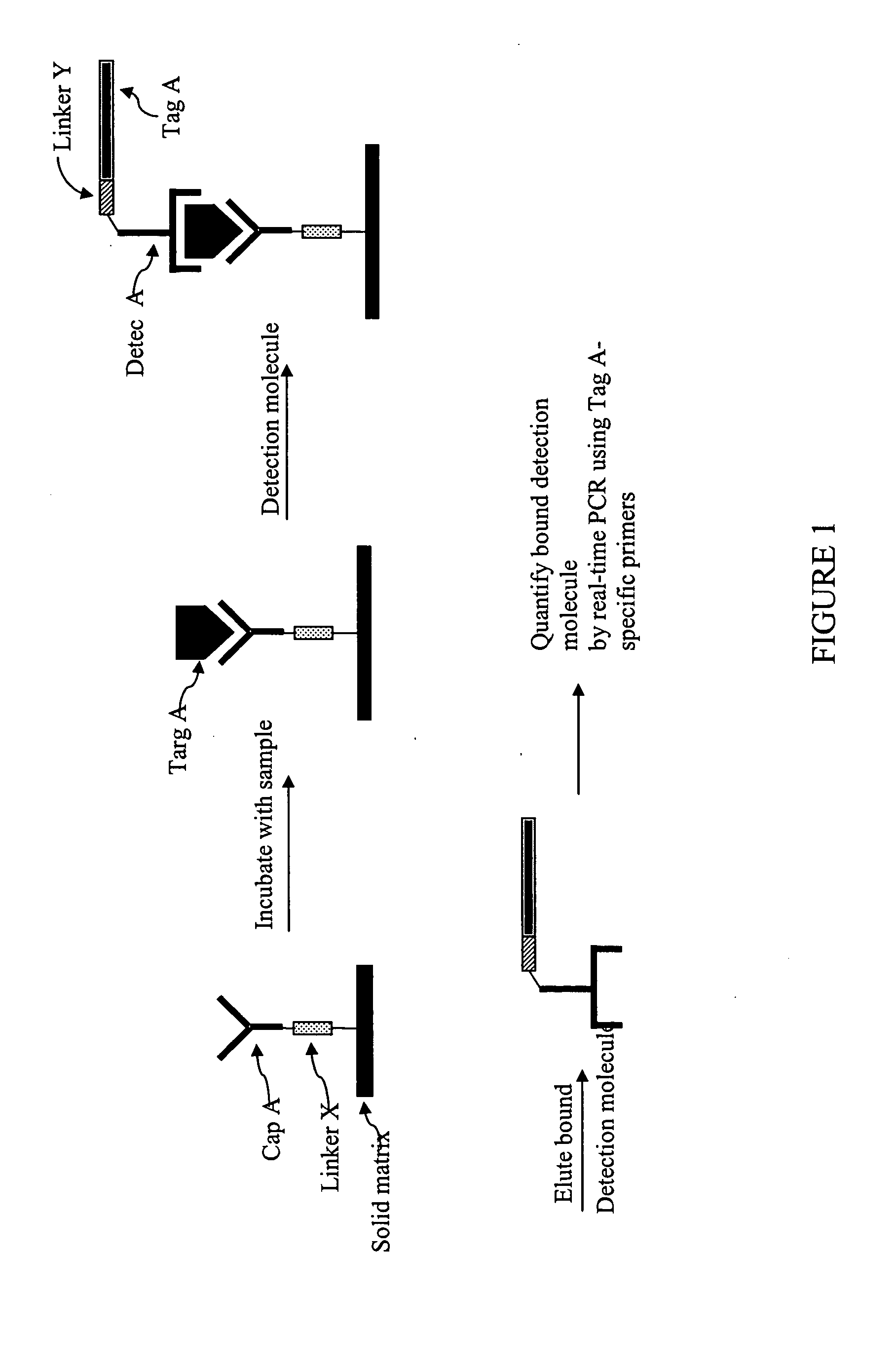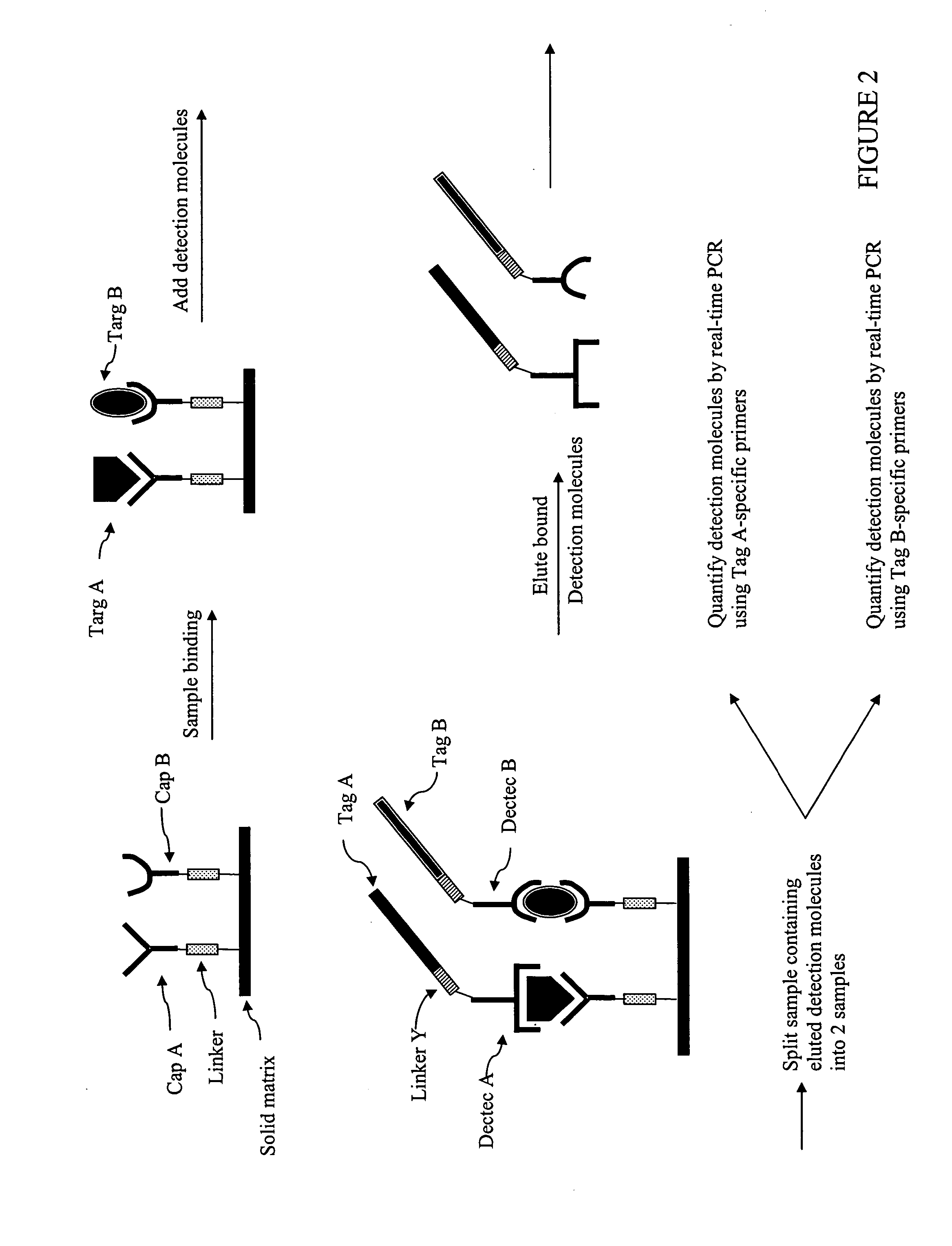Multiplexed analyte detection
a technology of analyte detection and complexed analyte, which is applied in the direction of material analysis, biochemistry apparatus and processes, fermentation, etc., can solve the problems of low throughput, cumbersome assay of nucleic acids, and generally less stable assay conditions, so as to improve the dynamic range, improve the sensitivity to conventional methods, and improve the effect of resistance to contamination
- Summary
- Abstract
- Description
- Claims
- Application Information
AI Technical Summary
Benefits of technology
Problems solved by technology
Method used
Image
Examples
example
Quantitation and Detection of Interleukin 5, Interleukin 6, and TNF-α Using Sandwich-type Immunoassay and Real-time PCR
[0169] Primer, Probe, and DNA Labels
[0170] DNA labels and primers were synthesized by using standard phosphoramidite chemistry. An amino group was incorporated at the 5′ end of the DNA labels through a C6 spacer during the DNA synthesis. To introduce a sulfhydryl through the reaction with the 5′ amino group of the DNA labels, the DNA labels were dissolved in PBS buffer (10 mM sodium phosphate, 150 mM NaCl, pH 7.4) and Sulfo-LC-SPDP (sulfosuccinimidyl 6-[3′-(2-pyridyldithio)-propionamido]hexanoate (Pierce Endogen, Rockford, Ill.) was added to the DNA solutions to a final concentration of 2 mM. The reactions were carried out at room temperature for 1 hour. The 2-pyridylthio group protecting the sulfhydryl was subsequently removed by 5.5 mM TCEP (Tris[2-carboxyethylphosphine]hydrochloride) (Pierce Endogen, Rockford, Ill.) at room temperature for 1 hour. The DNA label...
PUM
| Property | Measurement | Unit |
|---|---|---|
| molecular weight | aaaaa | aaaaa |
| temperatures | aaaaa | aaaaa |
| concentrations | aaaaa | aaaaa |
Abstract
Description
Claims
Application Information
 Login to View More
Login to View More - R&D
- Intellectual Property
- Life Sciences
- Materials
- Tech Scout
- Unparalleled Data Quality
- Higher Quality Content
- 60% Fewer Hallucinations
Browse by: Latest US Patents, China's latest patents, Technical Efficacy Thesaurus, Application Domain, Technology Topic, Popular Technical Reports.
© 2025 PatSnap. All rights reserved.Legal|Privacy policy|Modern Slavery Act Transparency Statement|Sitemap|About US| Contact US: help@patsnap.com



